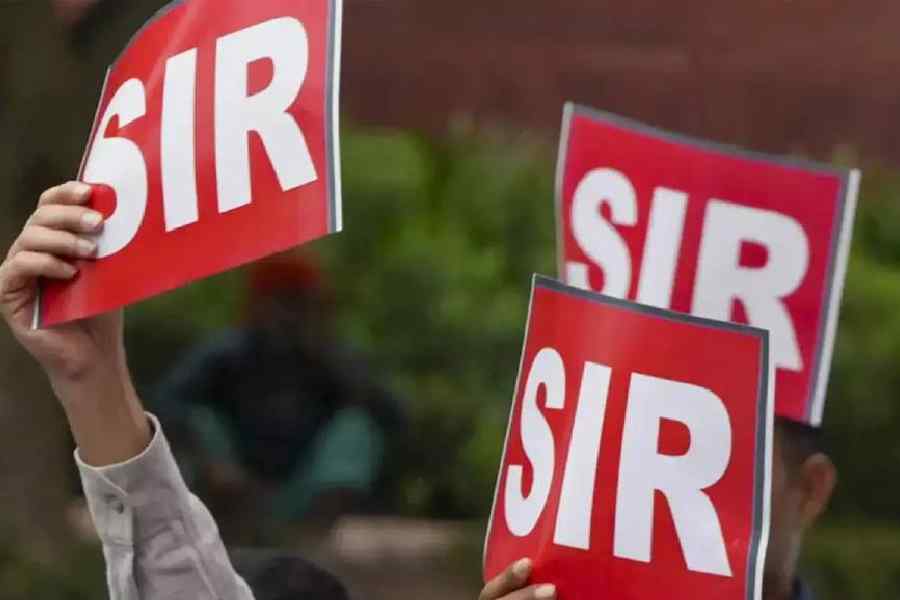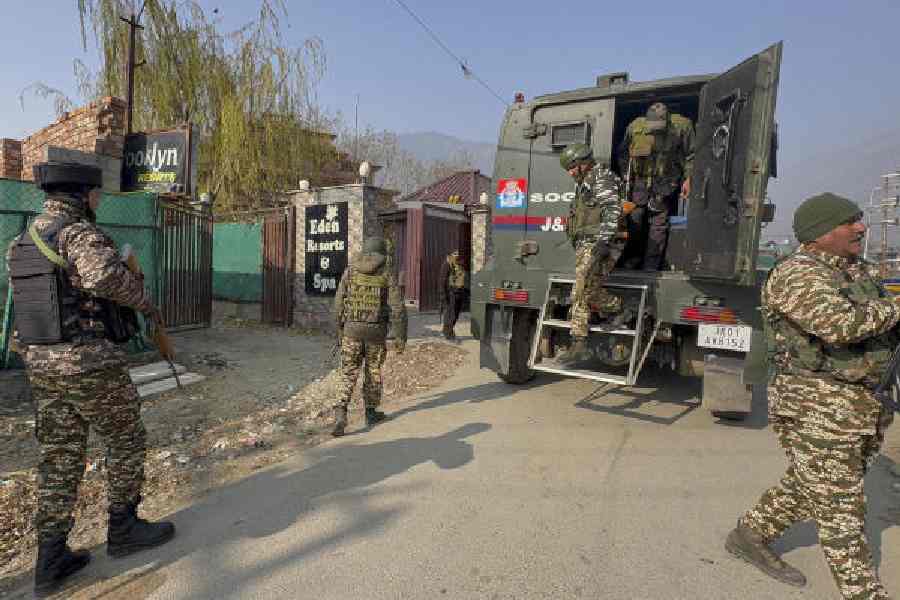|
|
| Cast in stone |
It is likely that New Delhi will celebrate its 100th birthday by raising a monument to honour its builders. The decision to shift the capital from Calcutta to Delhi was taken in 1911 and announced by King George V when he and his consort, Queen Mary, held the royal durbar. It was assumed the new capital would be built on the same site — Kingsway Camp. Experts found the site unsuitable. So after exploring the countryside on horseback, they decided to build it on Raisina Hill, with the Viceregal Lodge (Rashtrapati Bhavan) at its peak. The schedule for constructing the city was upset by the First World War (1914-18). It was not until 1920 that the real work started. The two chief architects were Edwin Lutyens and Herbert Baker. Lutyens had planned to dam up the Jamuna behind Hymayun’s tomb to create a huge lake with a broad riverside drive along its bank. His extravagance had to be curbed. He did, however, lay out the basic features of the city to be built. The two architects hired a dozen or so engineers from the central public works department. There was only one Indian among them, Teja Singh Malik. There were building contractors to secure building materials and labourers to give shape to the architects’ designs. All of them happened to be Sikhs: Sujan Singh and his son, Sobha Singh, Sobha Singh’s closest friend and next-door neighbour, Baisakha Singh, as well as Narain Singh, Sewa Singh, Ranjit Singh, Dharam Singh, Manohar Singh and Ram Singh Kabli. All of them lived on Jantar Mantar Road between Ashoka Road and Sansad Marg. A later arrival was Mohan Singh, who built the American embassy and lived in New Friends Colony.
Next came stone masons (sang tarashs) who were descendants of the builders of Mughal forts, palaces and mausoleums. They came from Agra and Delhi.
The most important section of the builders were labourers; over 30,000 men and women — all from Rajasthan — who were known as Bagris. The men were paid half a rupee a day, the women six annas. They lived in jhuggi jhonpris, ate chapatis with salt and raw chillies and drank well water: they were the poorest of the builders and yet the most cheerful.
Hidden hand
Some coincidences continue to baffle me and make me believe that a hidden hand might be behind them. The latest is connected with a beautiful painting of Guru Gobind Singh seated on a carpet reclining on a holster (gadela). It faces my padded arm chair in which I spend my days reading, writing and dozing off. I thought some verses should be written beneath it. One crept into my mind:
Gagan damaama bajeo
Pareo nishaaney ghao.
Kettle-drum of war resounded in the sky
A wound was inflicted on the right spot.
I could not recall any more lines after that. A young professor from the GTB Khalsa College dropped in and gave me the remaining lines:
Kheyt jo maandeo soorma ab jhoojan ka chaao
Soora so pahchaneye jo larey deen kay heyt
Purja Purja kat marrey kabhoo na chaadey kheyt
He told me these lines were by Kabir and were quoted in the Granth Sahib. A few days later, I received my copy of the monthly, The Sikh Review, edited by Saran Singh, a retired IAS officer from Calcutta. It always starts with a verse from the Granth Sahib with its translation in English. The December issue had the very verse which had been going round in my mind for many days:
As the battle-drums reverberate,
Only the brave ones take position,
And warriors of spirit advance in the face of death.
He alone is known as the champion warrior who takes up arms to defend the helpless
Unafraid of being slashed to pieces,
Never abandoning the battlefield.
I am as concerned with the translation — probably done by the editor — as I am with the coincidence of the timing.
Turn tables
What is the difference between the corruption in other countries and that in India?
In other countries, corruption is either over the table or under the table, but in India, corruption includes the table.
Drink up
On which day do the sales of Teacher’s blended scotch whisky soar in India?
Teachers’ Day.
(Contributed by K.J.S. Ahluwalia, Amritsar)











